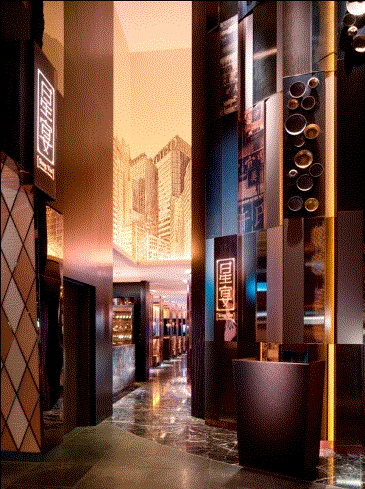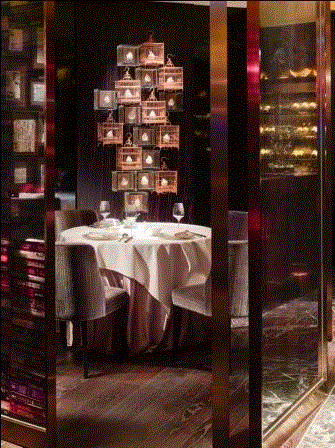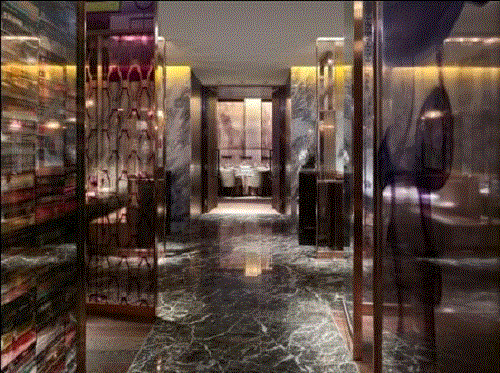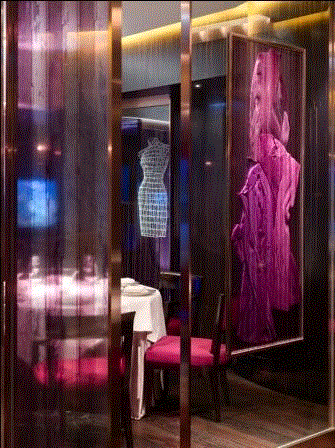
HONG KONG Chinese restaurants are often known for gaudy decor replete with kitschy dragons and motifs, but Steve Leung Designers brings a sense of nostalgia and modernity to W Hotels’ first Chinese restaurant in the world. Sing Yin at W Hong Kong pays tribute to the city’s street culture and East- meets-West dynamism.
Steve Leung and his team have drawn inspiration from Hong Kong’s terrain and cityscapes, forgoing the glitz and gaudiness often associated with Chinese restaurants. “I was not only born and raised in Hong Kong, but also have been working here ever since graduation. I can say that I am 100% made in Hong Kong, and thus I have deep sentiment toward Hong Kong,” he says. “Sing Yin in Hong Kong is the first Chinese restaurant by the W Hotel group. We want to demonstrate the unique features of Hong Kong, such as our precious collective memories of old Hong Kong and the hustle streetscape. I hope that this extraordinary design can bring diners exciting and remarkable dining experience.”

With high ceilings at the entrance and large asymmetrical screens depicting the frenetic energy of Hong Kong’s vibrant markets, diners are immediately drawn into a space that is at once contemporary in feel, yet culturally charged. Hanging artifacts, native to Hong Kong’s colonial past and present-day success as a thriving financial hub are whimsically suspended.
Using a palette of smoky hues of grey and cappuccino, interspersed with vibrant jewel tones that have been selected to provide contrast to the banquette seats, cause a striking contrast. The colors have been chosen to depict the city’s blend of cold concrete and lively neon signs. The space opens to reveal a contemporary style that emphasizes the unique features of Hong Kong streets—both glamorous and gritty.

High ceilings at the entrance decorated with the large screens hanging asymmetrically depicting Chinese cultural art pieces, give guests the feeling of walking onto the crowded streets of Hong Kong. At the bar, a dark wooden wine rack paired with retro decorations adds a nostalgic air, channeling Hong Kong in the early 1960s and 1970s. A long corridor leading to the main dining space is arranged to mirror a set of narrow streets.
A semi-exposed private dining area, furnished to mimic family-run stores pave the way to more dining areas. Separated by screens, a small arrangement of faux stores, such as grocers, bookstore, barbers and boutiques from yesteryear have been incorporated. References to Hong Kong’s dynamic trading heritage grows stronger further along the corridor where special lighting effects have been employed, lending a playful sense to the space, littered with memorabilia from a bygone era.

The long corridor leads to the multi-functional main dining space where it can be flexibly separated into two private areas upon request. The two areas are given separate themes of a cosmopolitan snapshot of skyscrapers and Kowloon landscapes. The restaurant has a private VIP room depicting themes from Hong Kong’s countryside.
